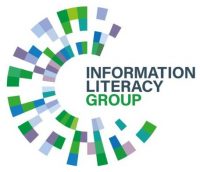
Dan Wills is Quality Manager for the Patient Information Forum (PIF). He runs the PIF TICK – the only assessed quality mark scheme for online and printed health information in the UK. In this guest blog he discusses how we can help the public identify and use trusted health information.
Helping organisations understand the importance of trusted, evidence-based information that people can access and understand has been at the core of my working life. I have been involved with health information for over a decade, working in the private sector, NHS England and now the Patient Information Forum (PIF). It is a great time to be working in this field because access to trusted health information for everyone has never been more important.
At PIF we believe in making evidence-based health information accessible to all. The COVID-19 pandemic has highlighted just how easy it is for misinformation and disinformation to spread. What can we do to stop this and help people spot good quality trusted health information?
Signposting evidence-based, up-to-date information
One way to help the public easily identify trusted health information which is evidence based and up to date is the use of quality marks. Consumer research by PIF found 80% of the public would look for a quality mark on health information. That is why we launched the PIF TICK in May 2020. The PIF TICK’s robust assessment process makes sure information is based on up-to-date, reliable, trusted evidence. Any source used or reviewed to create information must be fully referenced and stored.
Health charities, companies and NHS Trusts that have the PIF TICK say it has helped them improve their information production process. In a recent survey, 95% of organisations said they had made changes to their information production process since signing up to the scheme and found it beneficial to have external review of their information production process. The PIF TICK also demonstrates to patients and the public that members take health information seriously. When people see the PIF TICK on information, they can be assured it is based on reliable evidence.
But what do the terms ‘reliable evidence’ and ‘evidence-based’ actually mean to people? During the pandemic there has been plenty of misinformation which claims to be based on reliable evidence.
There is a whole set of literature on quality evidence but you need to be an academic to make sense of some of it. The PIF TICK website not only provides a gateway to organisations that have achieved our standard, it provides common sense guides to clinical evidence, spotting the warning signs of fake news and understanding data in health information.
Committing to becoming a health-literacy friendly organisation
Part of levelling up is equipping the public with the health literacy skills they need to make decisions about their health. The PIF TICK website is part of our mission on health literacy. As well as being accurate, it is just as important that information is easy to use and understand. The PIF TICK criteria embed principles of health literacy, user involvement and user testing to help ensure information meets people’s needs.
Plain and simple language and clear risk communication is a vital element of health information. It is as important as the evidence you are trying to communicate. Too often patients struggle to understand health information because of the complexity of the language used. According to Rowlands et al, 42% of working-age adults are unable to understand or make use of everyday health information. This rises to 61% when numbers are involved.
We believe this has to change. More than 100 organisations have signed our health and digital literacy charter. By doing so, they commit to becoming a health-literacy friendly organisation, making it easier for people to navigate, understand and use information and services to take care of their health. Health and digital literacy charter members:
- Use clear communication (verbal, written, digital)
- Create easy to use digital tools/websites, printed information and premises
- Involve people in the development of information as routine and invite feedback
- Train staff in health literacy to meet these objectives
You can sign the charter here.
Core questions for your health information
When you are developing health information, the first base must be robust clinical evidence. But the PIF TICK will also ask these questions:
- Do you ensure your information meets the needs of users?
- Do you check it is easy to use and understand?
- Do you involve users in the production process?
- Do you know your information makes a difference to people, particularly those at risk of health inequality?
If you can answer yes to these questions you are already well on the way to meeting our standards and ready to start our external assessment and certification process.
If you are not sure, join us. We have a host of practical guidance, training and support to help everyone deliver the best health information to the public.
Dan and PIF Director Sophie Randall will be speaking at the LILAC 2022 conference from 1.45pm on 13 April.

